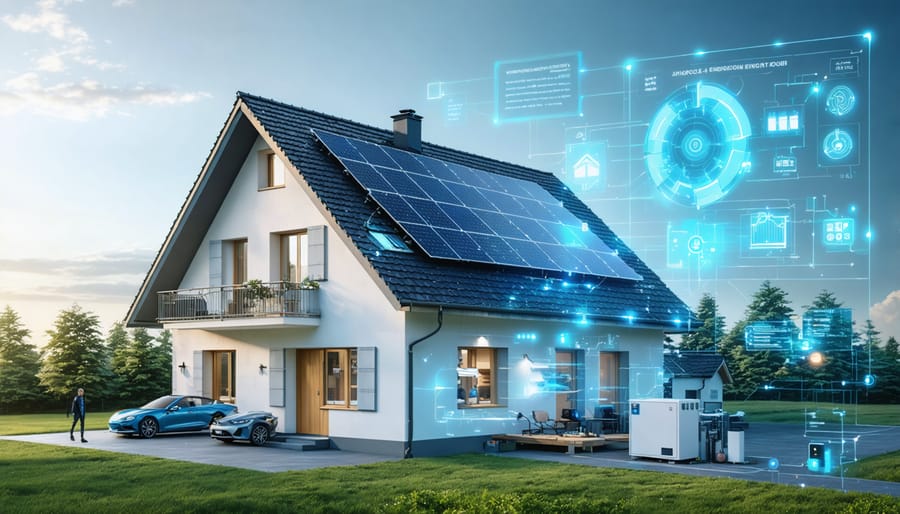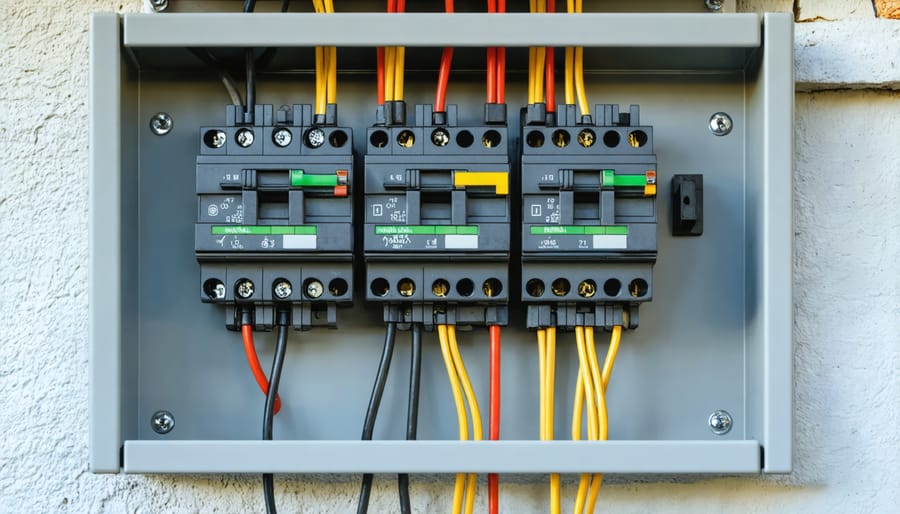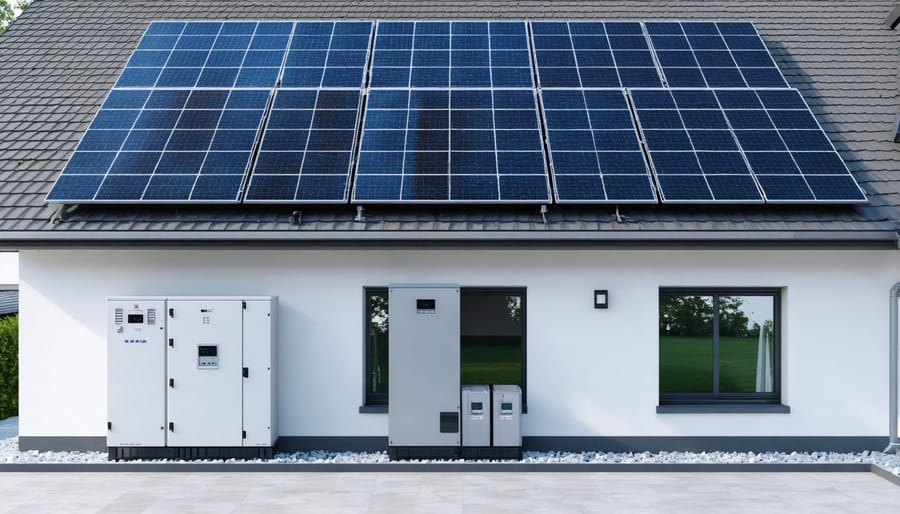Power Your Home When Grid Fails: Smart Emergency Solutions for European Homes

Power outages threaten more than just comfort—they risk your family’s safety, vital medical equipment, and critical home systems. Modern home emergency power solutions now offer unprecedented energy independence through intelligent systems that activate within milliseconds of grid failure. European homeowners increasingly combine solar arrays with advanced battery storage, creating resilient power networks that maintain essential operations during emergencies. Whether facing severe weather events or grid instabilities, a properly sized emergency power system ensures uninterrupted power to crucial appliances, security systems, and communication devices. The latest generation of smart backup solutions seamlessly integrates with home automation systems, automatically prioritizing critical loads while optimizing energy consumption during outages. This strategic approach to emergency power not only protects your household during crises but also contributes to daily energy efficiency and reduced utility costs.
Understanding Home Emergency Power Needs
Critical Load Assessment
Determining your critical power loads is essential for designing an effective emergency power supply system. Start by creating a comprehensive inventory of all electrical appliances and devices in your home that must remain operational during an outage. Focus particularly on essential items such as refrigeration, heating systems, medical equipment, and basic lighting.
Calculate the power requirements by checking the wattage rating of each device, typically found on the appliance label or user manual. For appliances with motors, account for surge power – the extra energy needed during startup, which can be 2-3 times the running wattage. Add up the wattages of devices that need to run simultaneously to determine your minimum power requirement.
Consider implementing a tiered approach to power needs: critical (medical equipment, essential heating), important (refrigeration, some lighting), and comfort (additional appliances). This helps prioritise power distribution during extended outages. Remember to factor in seasonal variations; winter heating or summer cooling may significantly impact your calculations.
For accuracy, use a power meter to measure actual consumption of key appliances, as rated wattages can differ from real-world usage. This detailed assessment ensures your emergency power system is properly sized to meet your essential needs.

Duration Planning
When planning your emergency power supply, carefully assess your household’s critical power needs and determine the duration for which you’ll need backup power. Start by listing essential appliances and their power consumption, including refrigerators, heating systems, medical equipment, and basic lighting. Consider seasonal variations, as winter months might require additional power for heating.
For most European households, a minimum backup duration of 24-48 hours is recommended to bridge common power outages. However, in areas prone to severe weather events or extended grid failures, consider planning for 72 hours or more. Factor in your location’s historical outage patterns and local climate conditions when making this decision.
Calculate your daily energy requirements in kilowatt-hours (kWh) by multiplying each appliance’s power consumption by its expected hours of use. Include a 20% buffer for unexpected needs. This total will help determine the battery capacity and fuel reserves needed for your chosen backup system, whether it’s a generator, battery storage solution, or hybrid system.
Remember that longer duration requirements will significantly impact system costs and space requirements, so balance your needs with practical constraints.
Modern Emergency Power Solutions
Solar + Battery Storage Systems
Modern home solar battery storage systems represent one of the most sustainable and reliable solutions for emergency power supply. These integrated systems combine solar panels with advanced battery technology to ensure continuous power availability, even during grid outages.
The system works by capturing solar energy during daylight hours, converting it to electricity, and storing excess power in battery units for later use. During a power cut, the system automatically switches to battery power, ensuring seamless operation of essential household appliances and systems.
A typical installation includes photovoltaic panels, a battery bank (usually lithium-ion), an inverter, and a smart control system. The size of your system depends on several factors, including your home’s energy consumption, available roof space, and specific backup power requirements. Most European homes benefit from systems ranging from 5kW to 10kW, combined with battery storage capacity between 10kWh and 15kWh.
The advantages of solar-plus-storage systems extend beyond emergency backup. They offer daily energy cost savings, reduce grid dependency, and contribute to lower carbon emissions. Modern systems also include smart monitoring capabilities, allowing homeowners to track energy production, storage levels, and consumption patterns through mobile applications.
While the initial investment may be significant, various European incentive programmes and reduced energy bills help offset costs. Additionally, these systems typically require minimal maintenance, mainly consisting of regular inspections and occasional cleaning of the solar panels, ensuring long-term reliability as an emergency power solution.

Smart Inverter Technology
Smart inverter technology represents a crucial advancement in home emergency power systems, offering sophisticated power management capabilities that go far beyond traditional backup solutions. At the heart of these systems, modern inverter battery systems incorporate intelligent features that automatically detect power outages and seamlessly switch to backup power within milliseconds.
These advanced inverters excel at power quality management, maintaining stable voltage and frequency levels crucial for sensitive electronic devices. They can prioritize essential appliances during outages, intelligently distributing available power to maximize backup duration. Many smart inverters also integrate with home energy management systems, allowing homeowners to monitor and control their power consumption through smartphone applications.
A particularly valuable feature is their ability to adapt to varying power demands and sources. Whether drawing from solar panels, batteries, or the grid, smart inverters optimize power flow to ensure maximum efficiency. They can even predict potential grid instabilities based on weather forecasts and historical data, preparing the system for upcoming challenges.
For European homeowners, these systems offer the additional benefit of compliance with strict EU grid codes and safety standards. Many models include built-in surge protection and advanced diagnostic capabilities, ensuring reliable operation when you need it most while simplifying maintenance requirements.
Hybrid Solutions
Combining multiple power sources creates a robust and reliable emergency power system for your home. A hybrid solution typically integrates renewable energy sources, such as solar panels, with traditional backup systems like generators and battery storage units. This approach maximises reliability while promoting sustainability and cost-effectiveness.
For instance, you might pair a solar installation with a battery system for daily use, supplemented by a compact generator for extended outages. During normal operations, the solar panels charge the batteries and power your home, while the generator remains on standby for emergencies or periods of low solar production.
The key advantage of hybrid systems lies in their flexibility and redundancy. If one power source fails or becomes unavailable, the system automatically switches to alternative sources, ensuring continuous power supply. Modern hybrid systems feature smart controllers that optimise power distribution, prioritising renewable sources when available and managing the transition between different power sources seamlessly.
Consider your specific needs, local climate conditions, and available space when designing a hybrid solution. While the initial investment might be higher, the long-term benefits include reduced operating costs, increased energy independence, and enhanced reliability during emergencies.
Installation and Integration
Professional Assessment
Professional assessment is a crucial first step in establishing a reliable home emergency power supply system. A qualified electrician or energy consultant will evaluate your home’s specific power requirements by analyzing historical energy consumption patterns, critical load demands, and existing electrical infrastructure. This thorough evaluation ensures your backup power solution is neither undersized, which could lead to system failure during emergencies, nor oversized, which would result in unnecessary costs.
During the assessment, experts consider factors such as peak power usage, startup power requirements for essential appliances, and the duration of backup power needed. They’ll examine your home’s electrical panel, wiring condition, and potential installation locations for batteries or generators. The evaluation also includes a safety assessment to ensure compliance with local regulations and building codes.
A professional will help determine the most suitable type of emergency power system for your needs, whether it’s a battery storage solution, generator, or hybrid system. They’ll consider factors like fuel availability, maintenance requirements, and environmental impact. The assessment typically includes a detailed cost analysis, covering initial investment, installation, ongoing maintenance, and potential energy savings.
This expert evaluation culminates in a comprehensive system design that outlines equipment specifications, installation requirements, and integration with existing home systems. Having this professional groundwork ensures your emergency power supply will perform reliably when you need it most.
Safety and Compliance
When installing a home emergency power supply system in Europe, compliance with EU safety regulations and standards is paramount. All backup power systems must conform to the Low Voltage Directive (LVD) 2014/35/EU and the Electromagnetic Compatibility (EMC) Directive 2014/30/EU. These directives ensure that electrical equipment operates safely and without causing interference to other devices.
For battery storage systems, the EN 62619 standard governs safety requirements, while EN 62040 series standards apply to uninterruptible power supply (UPS) systems. Installation must be performed by certified electricians who understand both national and EU-wide regulations, including the requirement for proper isolation switches and circuit protection devices.
Ventilation requirements are particularly crucial for systems with lead-acid batteries, which must be installed in well-ventilated areas to prevent hydrogen gas accumulation. Lithium-ion battery systems require adherence to specific fire safety protocols and should include battery management systems (BMS) that comply with EN 62619.
Regular safety inspections are mandatory, with documentation maintained according to local regulations. Systems must also display appropriate CE marking and safety labels in the local language. Modern smart systems should comply with cybersecurity standards to protect against unauthorized access and ensure safe operation during grid failures.
Environmental considerations are addressed through the WEEE Directive, ensuring proper disposal and recycling of system components at the end of their lifecycle.
Maintenance and Testing

Regular Maintenance Schedule
To ensure your emergency power supply remains reliable when needed, establish a consistent maintenance schedule. Monthly checks should include inspecting battery terminals for corrosion, verifying fluid levels in flooded batteries, and testing your battery management systems for optimal performance.
Quarterly maintenance tasks involve cleaning solar panels if installed, checking all electrical connections for tightness, and conducting a full system test under load conditions. Pay special attention to ventilation systems and ensure all safety equipment remains readily accessible.
Annually, schedule a professional inspection to assess battery health, verify inverter efficiency, and update system firmware if applicable. Document all maintenance activities and keep detailed records of system performance metrics. Replace batteries every 5-10 years, depending on usage patterns and battery type.
During extreme weather seasons, increase inspection frequency and ensure backup fuel supplies for generator systems are properly stored and maintained. This proactive approach helps maximize system reliability and extends equipment lifespan.
System Testing Protocols
Regular testing of your emergency power supply system is crucial for ensuring reliable performance when you need it most. Begin with a monthly visual inspection of all components, checking for signs of wear, damage, or corrosion. Test your batteries’ voltage levels using a multimeter and ensure they maintain proper charge levels.
Conduct a full system test every three months by simulating a power outage. Switch off your main power supply and verify that your backup system activates smoothly. Monitor how your essential appliances perform and record the system’s runtime. This helps you understand real-world performance and adjust your power management strategy accordingly.
During testing, pay special attention to transfer switch operation, inverter performance, and battery discharge rates. Listen for unusual sounds, check for proper ventilation, and verify that all safety systems are functioning correctly. Document each test, including any issues encountered and maintenance performed.
For generator-based systems, run the unit monthly for at least 30 minutes under load to prevent fuel system issues and ensure proper lubrication. Remember to maintain adequate fuel supplies and replace stored fuel according to manufacturer recommendations.
Ensuring a reliable emergency power supply for your home is not just a matter of convenience; it’s an essential aspect of modern living that provides peace of mind and security for you and your family. Throughout this guide, we’ve explored the various components and considerations that make up a comprehensive home emergency power system.
From selecting the right backup solution based on your specific needs to understanding the importance of proper installation and regular maintenance, each element plays a crucial role in creating a resilient home energy system. Whether you’ve opted for a traditional generator, a modern battery storage system, or a hybrid solution, the key is to ensure your system is properly sized, professionally installed, and regularly maintained.
Remember that emergency power preparation is an investment in your home’s resilience and your family’s comfort during unexpected outages. Regular system testing, maintenance schedules, and familiarisation with your equipment will ensure your backup power solution performs when you need it most.
As extreme weather events and grid instabilities become more common across Europe, having a reliable emergency power supply is no longer a luxury but a necessity. By taking proactive steps to implement and maintain your backup power system, you’re not just protecting your home from power disruptions; you’re investing in your family’s safety and comfort during challenging times.
Take action today to assess your emergency power needs and begin implementing the solutions that best suit your home’s requirements. The peace of mind that comes with being prepared is invaluable.
Leave a Reply